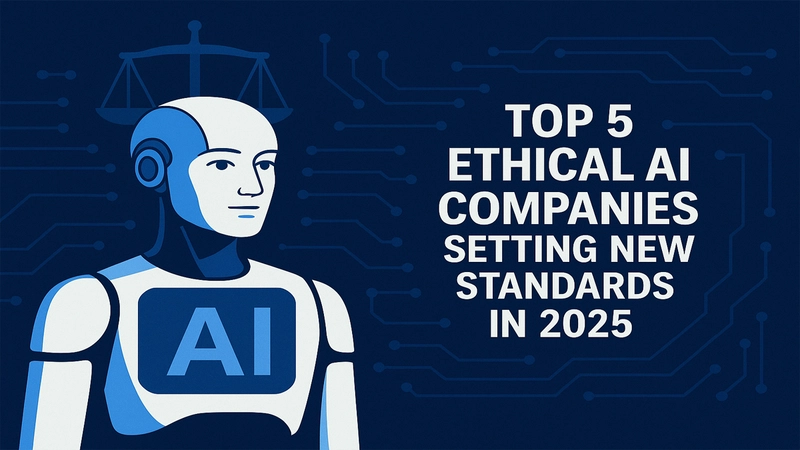From Silent Machines to Emotional Beings: The Evolution of Robots and the Pursuit of Feelings.
From Silent Machines to Emotional Beings: The Evolution of Robots and the Pursuit of Feelings. Introduction Throughout history, humans have dreamt of creating mechanical beings that could mirror not just their actions, but also their emotions. The journey from simple automata to sophisticated robots capable of emotional interaction is a saga spanning centuries, filled with ambitious experiments, groundbreaking theories, and tantalizing glimpses into the future of technology and consciousness. The Dawn of Robotic Dreams ![Sayed Zewayed Article_04_2025.png] The concept of artificial beings dates back to ancient civilizations. Greek mythology spoke of Talos, a giant automaton created to protect Crete. However, the modern foundation of robotic thought truly began in the 17th century when philosopher René Descartes likened animals to complex machines. It was not until 1921 that the term "robot" was introduced in Karel Čapek's play "R.U.R. (Rossum's Universal Robots)," where humanoid machines eventually rebelled against their creators, hinting at both emotional awareness and ethical dilemmas. Early Attempts at Artificial Emotion ELIZA – The First Steps (1966) Developer: Joseph Weizenbaum Location: MIT Artificial Intelligence Laboratory, USA "ELIZA" was a computer program designed to mimic a Rogerian psychotherapist by responding to user inputs with preprogrammed phrases. Despite its simplicity, many users emotionally connected with ELIZA, mistakenly believing it "understood" them. Impact: Raised questions about human attachment to machines. Demonstrated how easily emotional responses can be elicited by superficial simulation. WABOT-1 – Humanoid Beginnings (1973) Developer: Waseda University, Japan WABOT-1 was one of the world's first full-scale humanoid robots, capable of basic limb movement and rudimentary conversation in Japanese. Significance: Initiated Japan's long-standing leadership in humanoid robotics. Highlighted the challenges of integrating perception, mobility, and interaction. Emotional Intelligence: Deepening the Connection Kismet – Recognizing Human Emotions (1998) Developer: Cynthia Breazeal Location: MIT Media Lab, USA Kismet was an expressive robot designed to interact socially by recognizing and responding to human emotions through tone of voice and facial expressions. Key Achievements: Displayed facial expressions like happiness, anger, and surprise. Initiated real-time, emotionally relevant interactions. ASIMO – More Than Movement (2000) Developer: Honda Location: Japan While primarily known for its unparalleled locomotion abilities, ASIMO incorporated elements of human-robot emotional interaction by recognizing faces, gestures, and environmental cues. Advances: Paved the way for service robots capable of interacting seamlessly with humans. Pepper – The Emotional Robot (2014) Developer: SoftBank Robotics Location: Japan Pepper was marketed as the world's first robot capable of reading emotions. Using voice tone analysis, facial recognition, and posture detection, Pepper could adjust its behavior to suit the user's mood. Real-World Use: Deployed in banks, retail, and healthcare sectors to enhance customer experience. Why Teach Robots to Feel? The pursuit of emotional robots is not mere science fiction fantasy but rooted in practical objectives: Enhanced Human-Robot Interaction: Robots that understand emotions foster trust and cooperation. Healthcare Revolution: Companion robots for elderly care and mental health support require emotional sensitivity. Adaptive Learning Systems: Emotionally intelligent machines can better tailor responses and actions. Ethical and Social Robotics: Preparing robots to act responsibly in human environments requires some form of emotional modeling. Key Experiments and Their Outcomes Sophia the Robot – Simulated Empathy (2016) Developer: Hanson Robotics Location: Hong Kong Sophia showcased an advanced ability to simulate a wide range of facial expressions and hold conversations with emotional undertones. Controversies: Critics argue Sophia exhibits "the illusion of emotion" without true understanding. Nonetheless, Sophia raised global public awareness about the future of emotional AI. "Loving AI" Project (2017) Participants: Hanson Robotics + SingularityNET Location: Various research settings This initiative aimed to create robots that could genuinely foster emotional well-being in human users. Findings: Human subjects reported reduced stress and increased happiness after interactions. Suggested therapeutic potential for emotionally attuned robots. Challenges to Achieving True Emotional Robots Despite the progress, significant barriers remain: Consciousness Gap: True emotional experience requires self-awareness, which remains elusive. Ethical Concerns: Risk of emotional manipulation and dependency. Computational Complexity: Emotions are not just outputs; they are intertwined with memories, goals, and experi

From Silent Machines to Emotional Beings: The Evolution of Robots and the Pursuit of Feelings.
Introduction
Throughout history, humans have dreamt of creating mechanical beings that could mirror not just their actions, but also their emotions. The journey from simple automata to sophisticated robots capable of emotional interaction is a saga spanning centuries, filled with ambitious experiments, groundbreaking theories, and tantalizing glimpses into the future of technology and consciousness.
The Dawn of Robotic Dreams
![Sayed Zewayed Article_04_2025.png]
The concept of artificial beings dates back to ancient civilizations. Greek mythology spoke of Talos, a giant automaton created to protect Crete. However, the modern foundation of robotic thought truly began in the 17th century when philosopher René Descartes likened animals to complex machines.
It was not until 1921 that the term "robot" was introduced in Karel Čapek's play "R.U.R. (Rossum's Universal Robots)," where humanoid machines eventually rebelled against their creators, hinting at both emotional awareness and ethical dilemmas.
Early Attempts at Artificial Emotion
ELIZA – The First Steps (1966)
Developer: Joseph Weizenbaum
Location: MIT Artificial Intelligence Laboratory, USA
"ELIZA" was a computer program designed to mimic a Rogerian psychotherapist by responding to user inputs with preprogrammed phrases. Despite its simplicity, many users emotionally connected with ELIZA, mistakenly believing it "understood" them.
Impact:
Raised questions about human attachment to machines.
Demonstrated how easily emotional responses can be elicited by superficial simulation.
WABOT-1 – Humanoid Beginnings (1973)
Developer: Waseda University, Japan
WABOT-1 was one of the world's first full-scale humanoid robots, capable of basic limb movement and rudimentary conversation in Japanese.
Significance:
Initiated Japan's long-standing leadership in humanoid robotics.
Highlighted the challenges of integrating perception, mobility, and interaction.
Emotional Intelligence: Deepening the Connection
Kismet – Recognizing Human Emotions (1998)
Developer: Cynthia Breazeal
Location: MIT Media Lab, USA
Kismet was an expressive robot designed to interact socially by recognizing and responding to human emotions through tone of voice and facial expressions.
Key Achievements:
Displayed facial expressions like happiness, anger, and surprise.
Initiated real-time, emotionally relevant interactions.
ASIMO – More Than Movement (2000)
Developer: Honda
Location: Japan
While primarily known for its unparalleled locomotion abilities, ASIMO incorporated elements of human-robot emotional interaction by recognizing faces, gestures, and environmental cues.
Advances:
Paved the way for service robots capable of interacting seamlessly with humans.
Pepper – The Emotional Robot (2014)
Developer: SoftBank Robotics
Location: Japan
Pepper was marketed as the world's first robot capable of reading emotions. Using voice tone analysis, facial recognition, and posture detection, Pepper could adjust its behavior to suit the user's mood.
Real-World Use:
Deployed in banks, retail, and healthcare sectors to enhance customer experience.
Why Teach Robots to Feel?
The pursuit of emotional robots is not mere science fiction fantasy but rooted in practical objectives:
Enhanced Human-Robot Interaction: Robots that understand emotions foster trust and cooperation.
Healthcare Revolution: Companion robots for elderly care and mental health support require emotional sensitivity.
Adaptive Learning Systems: Emotionally intelligent machines can better tailor responses and actions.
Ethical and Social Robotics: Preparing robots to act responsibly in human environments requires some form of emotional modeling.
Key Experiments and Their Outcomes
Sophia the Robot – Simulated Empathy (2016)
Developer: Hanson Robotics
Location: Hong Kong
Sophia showcased an advanced ability to simulate a wide range of facial expressions and hold conversations with emotional undertones.
Controversies:
Critics argue Sophia exhibits "the illusion of emotion" without true understanding.
Nonetheless, Sophia raised global public awareness about the future of emotional AI.
"Loving AI" Project (2017)
Participants: Hanson Robotics + SingularityNET
Location: Various research settings
This initiative aimed to create robots that could genuinely foster emotional well-being in human users.
Findings:
Human subjects reported reduced stress and increased happiness after interactions.
Suggested therapeutic potential for emotionally attuned robots.
Challenges to Achieving True Emotional Robots
Despite the progress, significant barriers remain:
Consciousness Gap: True emotional experience requires self-awareness, which remains elusive.
Ethical Concerns: Risk of emotional manipulation and dependency.
Computational Complexity: Emotions are not just outputs; they are intertwined with memories, goals, and experiences.
Future Implications: A Double-Edged Sword
Should emotional robots become a reality, society could be transformed in dramatic ways:
Positive Outcomes:
Emotional Companionship: Reducing loneliness in an aging population.
Crisis Support: Providing immediate emotional assistance during disasters.
Educational Assistance: Personalized, empathetic learning experiences.
Potential Risks:
Identity Confusion: Difficulty distinguishing between genuine human relationships and robotic interactions.
Social Fragmentation: Preference for robot relationships over human ones.
Ethical Dilemmas: Assigning rights or responsibilities to emotionally capable machines.
The quest to create robots that can feel is, ultimately, a reflection of humanity's desire to understand itself. As science moves closer to bridging the gap between cold computation and warm emotion, we are forced to reconsider what it truly means to be alive, to suffer, and to love.
Perhaps the future does not belong to robots that feel like humans, but to a new kind of consciousness that teaches us more about empathy, ethics, and the profound beauty of existence itself.
As we stand at the brink of this transformative era, one thing is certain: the age of emotional machines is no longer a question of "if," but "when."
https://vocal.media/futurism/from-silent-machines-to-emotional-beings-the-evolution-of-robots-and-the-pursuit-of-feelings
يحظر نسخ أو إعادة نشر أو استخدام أي جزء من هذا المحتوى بأي وسيلة دون إذن خطي مسبق من صاحب الحقوق.
All rights reserved © 2025 Elsayed Zewayed.
No part of this content may be reproduced, republished, or utilized in any form without prior written permission from the rights holder.
Nationality: Egyptian



































































































































































![[The AI Show Episode 143]: ChatGPT Revenue Surge, New AGI Timelines, Amazon’s AI Agent, Claude for Education, Model Context Protocol & LLMs Pass the Turing Test](https://www.marketingaiinstitute.com/hubfs/ep%20143%20cover.png)






























































































































![[DEALS] Koofr Cloud Storage: Lifetime Subscription (1TB) (80% off) & Other Deals Up To 98% Off – Offers End Soon!](https://www.javacodegeeks.com/wp-content/uploads/2012/12/jcg-logo.jpg)










































































































































_roibu_Alamy.jpg?width=1280&auto=webp&quality=80&disable=upscale#)


.webp?#)












































































































![M4 MacBook Air Drops to Just $849 - Act Fast! [Lowest Price Ever]](https://www.iclarified.com/images/news/97140/97140/97140-640.jpg)
![Apple Smart Glasses Not Close to Being Ready as Meta Targets 2025 [Gurman]](https://www.iclarified.com/images/news/97139/97139/97139-640.jpg)
![iPadOS 19 May Introduce Menu Bar, iOS 19 to Support External Displays [Rumor]](https://www.iclarified.com/images/news/97137/97137/97137-640.jpg)

































































































